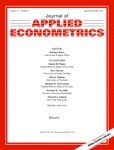
Koopman, S. and Lucas, A. (2005). Business and Default Cycles for Credit Risk Journal of Applied Econometrics, 20:311--323.
-
Affiliated authors
-
Publication year2005
-
JournalJournal of Applied Econometrics
Various economic theories are available to explain the existence of credit and default cycles. There remains empirical ambiguity, however, as to whether these cycles coincide. Recent papers suggest by their empirical research set-up that they do, or at least that defaults and credit spreads tend to co-move with macroeconomic variables. If true, this is important for credit risk management as well as for regulation and systemic risk management. In this paper, we use 1933-1997 US data on real GDP, credit spreads and business failure rates to shed new light on the empirical evidence. We use a multivariate unobserved components framework to disentangle credit and business cycles. We distinguish two types of cycles in the data, corresponding to periods of around 6 and 11-16 years, respectively. Cyclical co-movements between GDP and business failures mainly arise at the longer frequency. At the higher frequency of 6 years, co-cyclicality is less clear-cut. We also show that spreads reveal a positive and negative co-cyclicality with failure rates and GDP, respectively. This pattern disappears, however, if we concentrate on the post World War II period. We comment on the implications of our findings for credit risk management. Copyright {\textcopyright} 2005 John Wiley \& Sons, Ltd.